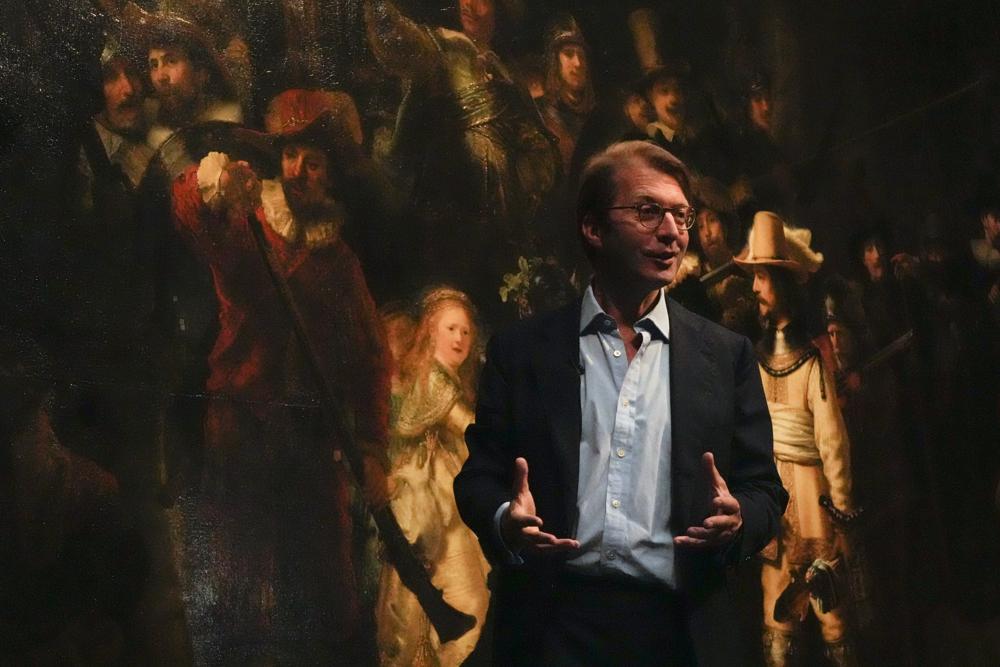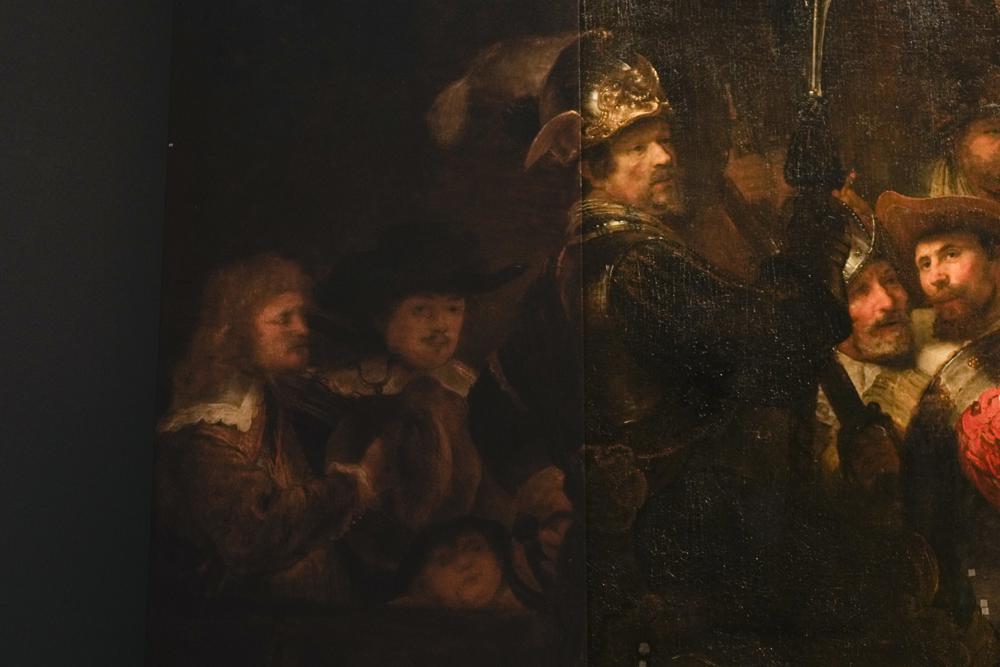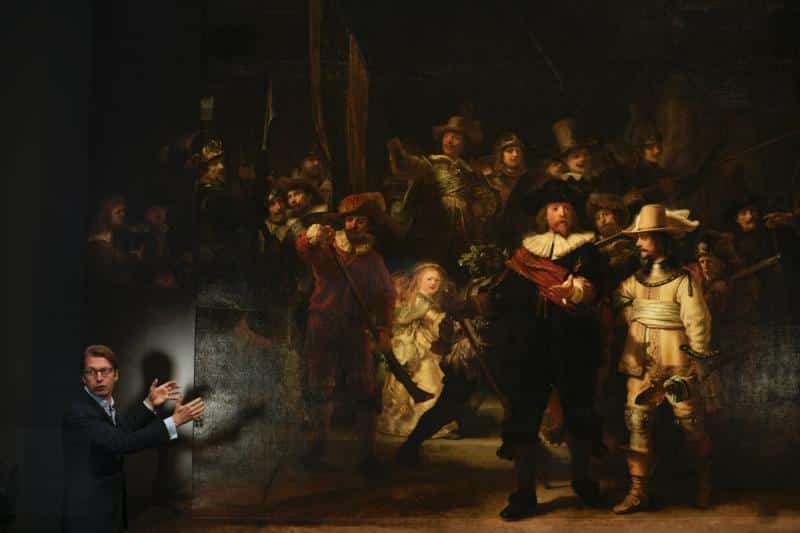One of Rembrandt van Rijn's greatest paintings just got a little bigger.
A marriage between art and artificial intelligence has allowed the Rijksmuseum of Amsterdam to recreate parts of the iconic painting “The Night Watch”: they were cut 70 years after Rembrandt finished it.
Now the missing parts are printed on a panel positioned on the sides of the 1642 painting, in the museum's Gallery of Honor. Their addition returns the work to the off-center focal point that the rebellious Golden Age master, Rembrandt, originally conceived.
“Now this night patrol can breathe,” said the museum director Taco Dibbits.

Rembrandt and a broader view
Today the two main characters of the crowded painting, Captain Frans Banninck Cocq and Lieutenant Willem van Ruytenburch, are central in the cut painting. With the new digital additions (particularly the one on the left of the Rembrandt painting which depicts two men and makes it clear that a boy is looking over a balustrade) the main figures are actually moved further to the right.
It really gives the painting a different dynamic. And what he taught us is that Rembrandt never does what you expect. And Rembrandt's night watch is no exception.
Taco Dibbits
Hunt for the Lost Fragment
The museum has always known that the original, uncut painting was larger, thanks to a much smaller copy painted at the same time and attributed to the painter Gerrit Lundens. Researchers and restorers have thoroughly studied the work for nearly two years. Using high-tech scanners, X-rays and digital photography they combined the large amount of data they generated with the Lundens copy to recreate and print the missing strips.

The researchers created an incredibly detailed photo of the Night Watch, and through artificial intelligence taught the computer what color Rembrandt used in the painting, and how his brushstrokes appeared. Machine learning also allowed the museum to remove perspective distortions present in Lundens' copy, because the artist was sitting in a corner while painting Rembrandt's painting.
Why was Rembrandt's 'Night Watch' cut?
The reason why the 1642 group portrait of an Amsterdam civil militia was cut is simple: it was moved from the militia club's headquarters to the town hall and did not fit on a wall between two doors there. This was followed by some very "rough" cutting with a pair of scissors and the painting took on the dimensions that have been known for centuries. Where did the cut pieces end up? This remains a mystery.
The digital reproduction will be on display in the coming months. It is part of the Rembrandt framework project: research and restoration of a marvel called “Operation Night Watch” began just under two years ago, before the global pandemic emptied museums for months.

During the restoration project, Rembrandt's painting was enclosed in a specially designed stained glass window. It was then studied in detail from the canvas to the final layer of paint. Out of that heap of data, the researchers created the most detailed photograph of the painting ever made. Think: it was obtained by combining well 528 digital exhibits.
Dibbits said the printed additions to this new panoramic version (what should I call it? Tele Ronda?) are not intended to trick visitors into thinking the painting is larger. The objective is different: to give them a clear idea of how it should have looked.


